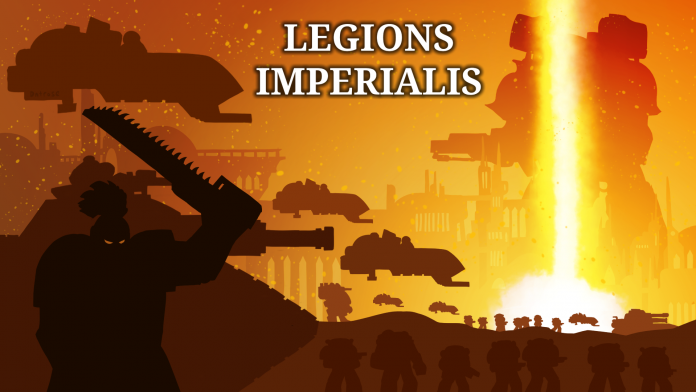I bought two the Legiones Astartes Support boxes, as it allows you to have single loadout detachments of dreadnoughts and Rapiers (mixed Tarantula detachments are completely fine because of their rules). This means I had a tidy pile of 32 bases of miniatures to build and paint.
Table of Contents
The Sprue
The sprue is a standard frame size, consisting of one of each unit/loadout within the box. Two sprues then gives you enough for a mixed loadout detachment, and four sprues enough for a mono-loadout detachment.
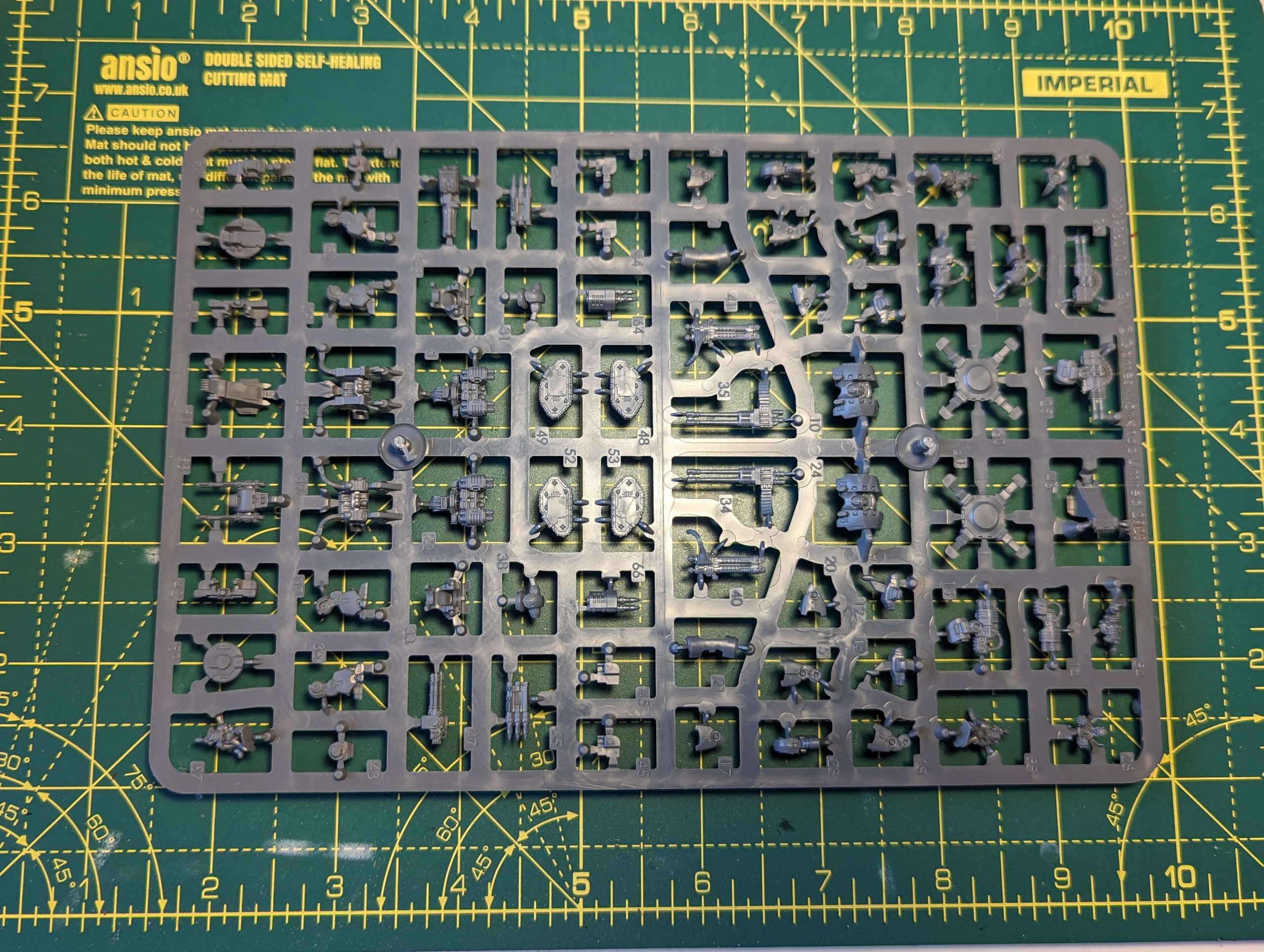
The sprues are clean, and well-laid out and designed. The detail on pieces continues to set new standards (the rivets on the dreadnoughts are microscopic) and there were no deformations in the sprue.
I continue to be impressed with the epic scale models, and have been since Titanicus was launched. The infantry with their undercuts I’m a little on the fence about but they’re so small that at gaming distance they look fine.
Building
I assembled the models with a view to how I would paint them. This meant I left the arms off the Leviathan dreadnoughts, did not glue in the Tarantula turrets and left the missile pods from the Deredeo dreadnoughts separate.

The infantry were glued to coffee stirrers with small blobs of PVA for the purpose of undercoating and painting.
Things to watch for:
- Lascannons on the Tarantulas
- Storm Cannon barrels on the Leviathan
These are thin enough that they can bend or break when removing them from the sprue, so be particularly careful with these.
To create variety with the Dreadnoughts I did the following:
- The Deredeo leg sections are interchangeable, though everything else is fixed. This means you can get two different bodies for each type of Deredeo by switching the leg sections around when building them.
- The Leviathans have the guns on opposite arms, so you can’t mix and match the melee arms, but you can mix the claws and siege fists. Similarly you get two different body profiles and can mix these, meaning that the four Leviathans in each detachment will look different.
Everything is fairly simple to build, with the absolute most annoying thing being the Deredeos with their cabling/ammo feeds and how much the cannons/plasma guns obstruct the body.
Painting
The models were spray-painted black. You could save time undercoating them with red spray, but I was fine doing this and two thin-coated my way to a solid red.
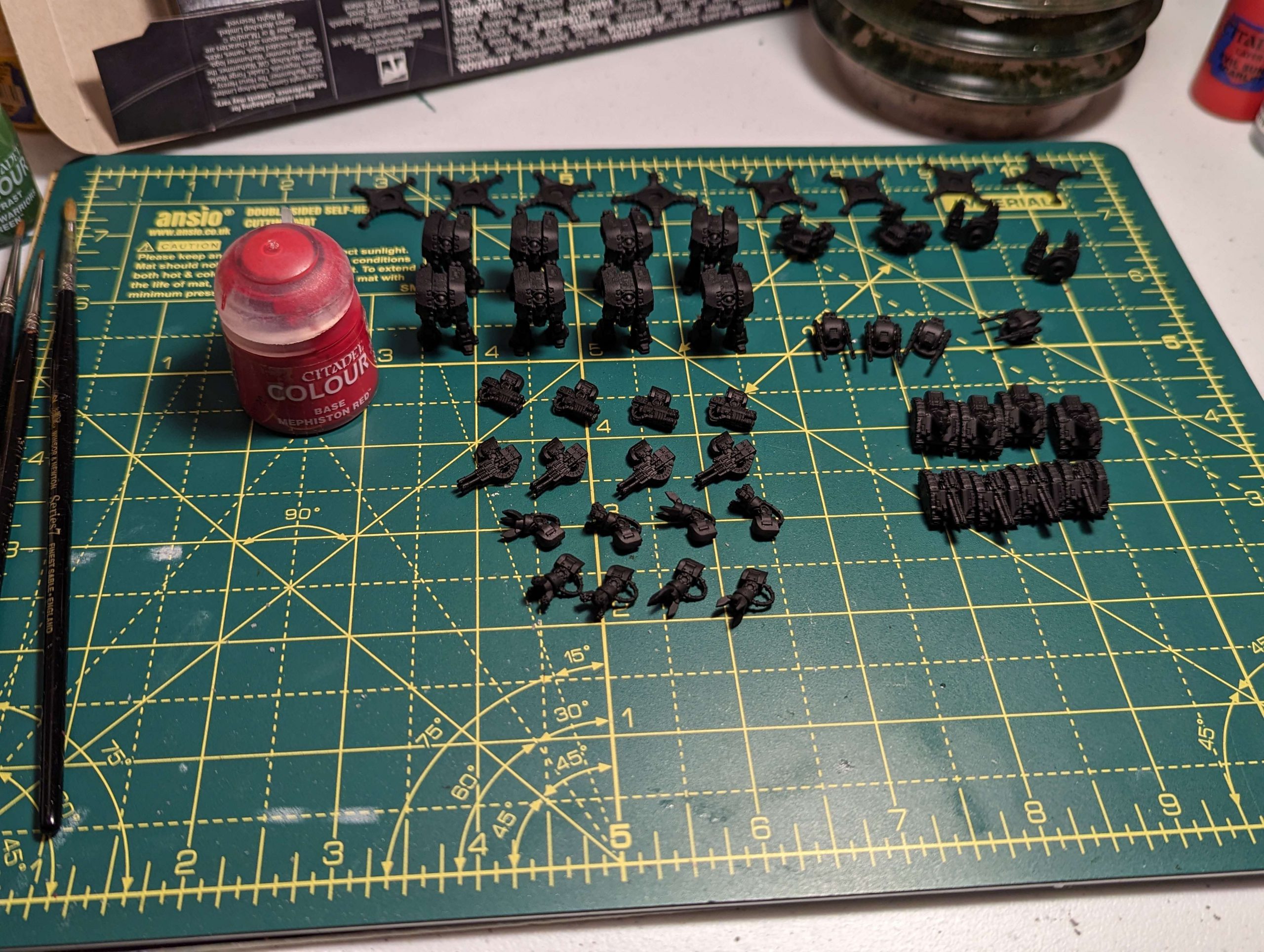
Red was the major colour, and as is the way to do it with LI, I went fairly bright. The base coat was Mephiston Red (twice) with a wash of Agrax, followed by almost completely covering with Evil Sunz Scarlet, and then line highlighting with Wild Rider Red. This gave the colour seen below, which was then glazed with a 50/50 mix of contrast medium and Blood Angels Red with an extra drop of water added.
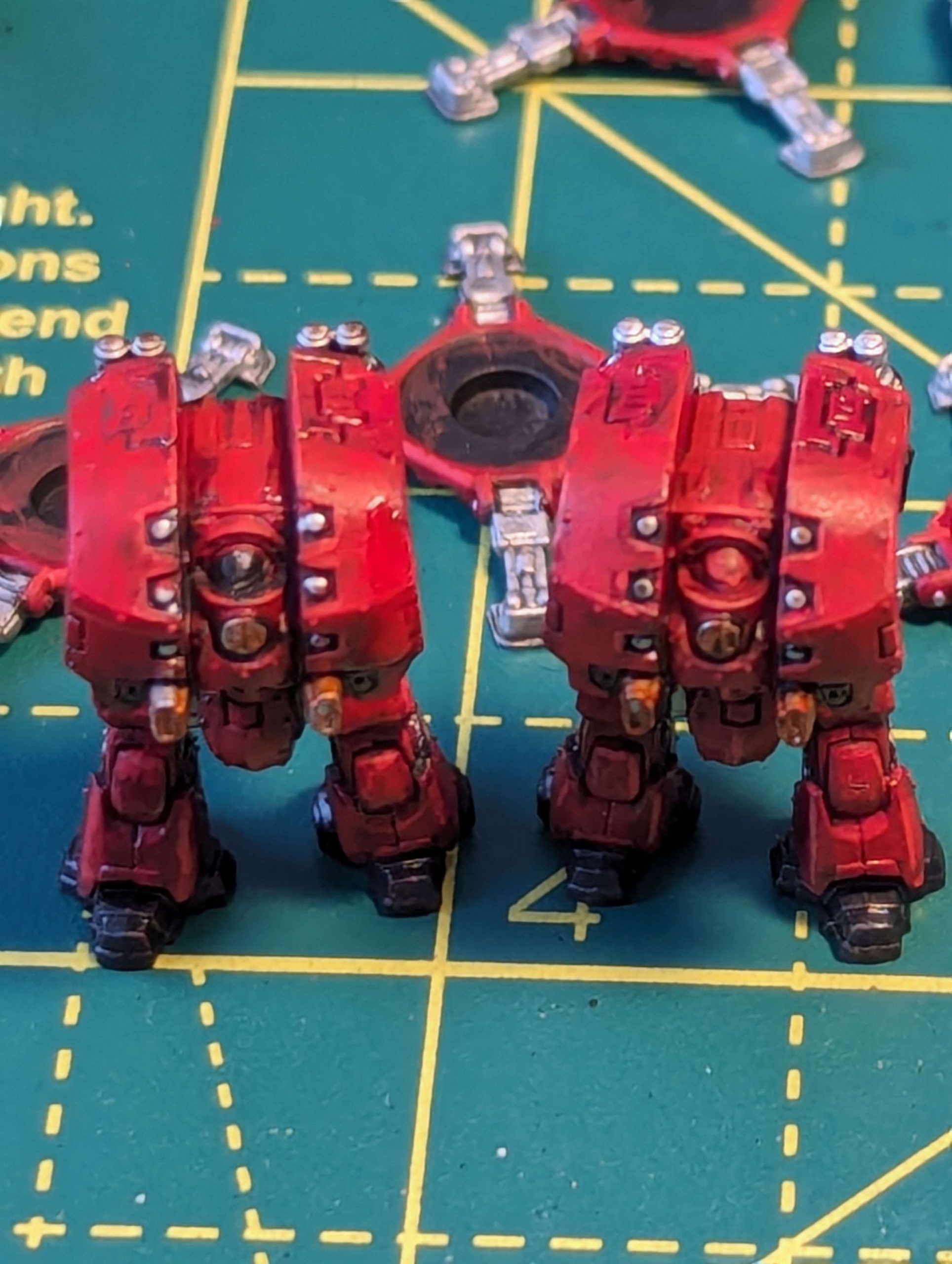
Infantry followed a similar scheme, with piping and studs picked out in Vallejo Metal Air Chrome and holsters in XV-88.
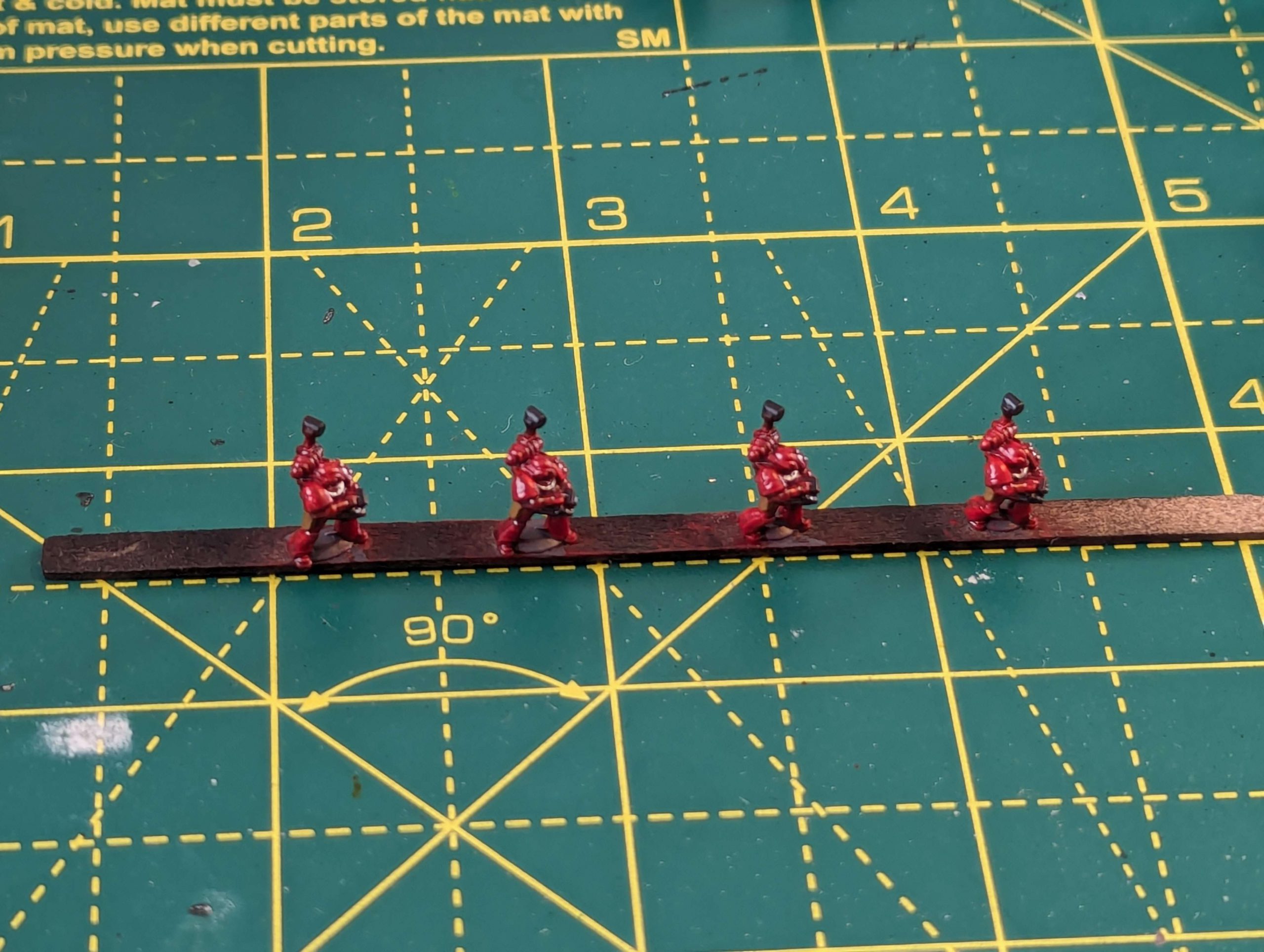
Everything black was Corvus Black, and the metal Vallejo Chrome. I washed the metal and black with Nuln oil.
With this done, I coated the models in acrylic varnish and panel-washed them where I felt they would benefit. Panel washing carefully done gives good results on models with the amount of surface detail that Epic scale models have. Where the pin wash was too heavy a bit of tissue tidied it up.
When painting Legions Imperialis figures you have to bear in mind you can either paint things with large amounts of detail, which are there on the miniature, or you can get them done quickly. Two boxes of Astartes Support, if you take them all in your force, come to 472 points, less than 1/6 of the standard army size, and even then the majority of those points are in four detachments of dreadnoughts. So you need to paint a lot, and you need to paint it quickly.
This is why apart from a few details, I haven’t picked out that many. Most models will be seen from a tabletop distance, so arms length at least, and the smaller details just aren’t visible.
The rivets on the Leviathan are so fine that you can barely see them in the zoomed in photos in this article. I painted the rivets on one Leviathan, gave it to my wife as she has better eyesight than me, told her where the rivets were, and she still needed to have the model six inches from her face to see them.
So you know what? Leave them. I’ve seen people with LI Leviathans where they’ve painted the eyes. They’re better painters than me, and they’re painting individual miniatures, not an army. I need to get two boxes done in a week.
The Results
Here’s the group shot. Eight detachments of models done in a week, though not painting every day. If you’re going to be playing a full sized game within a couple of months this is pretty much the pace you need to paint at.

Here’s the Tarantulas, which were quick to turn around. I particularly like the lascannon ones.
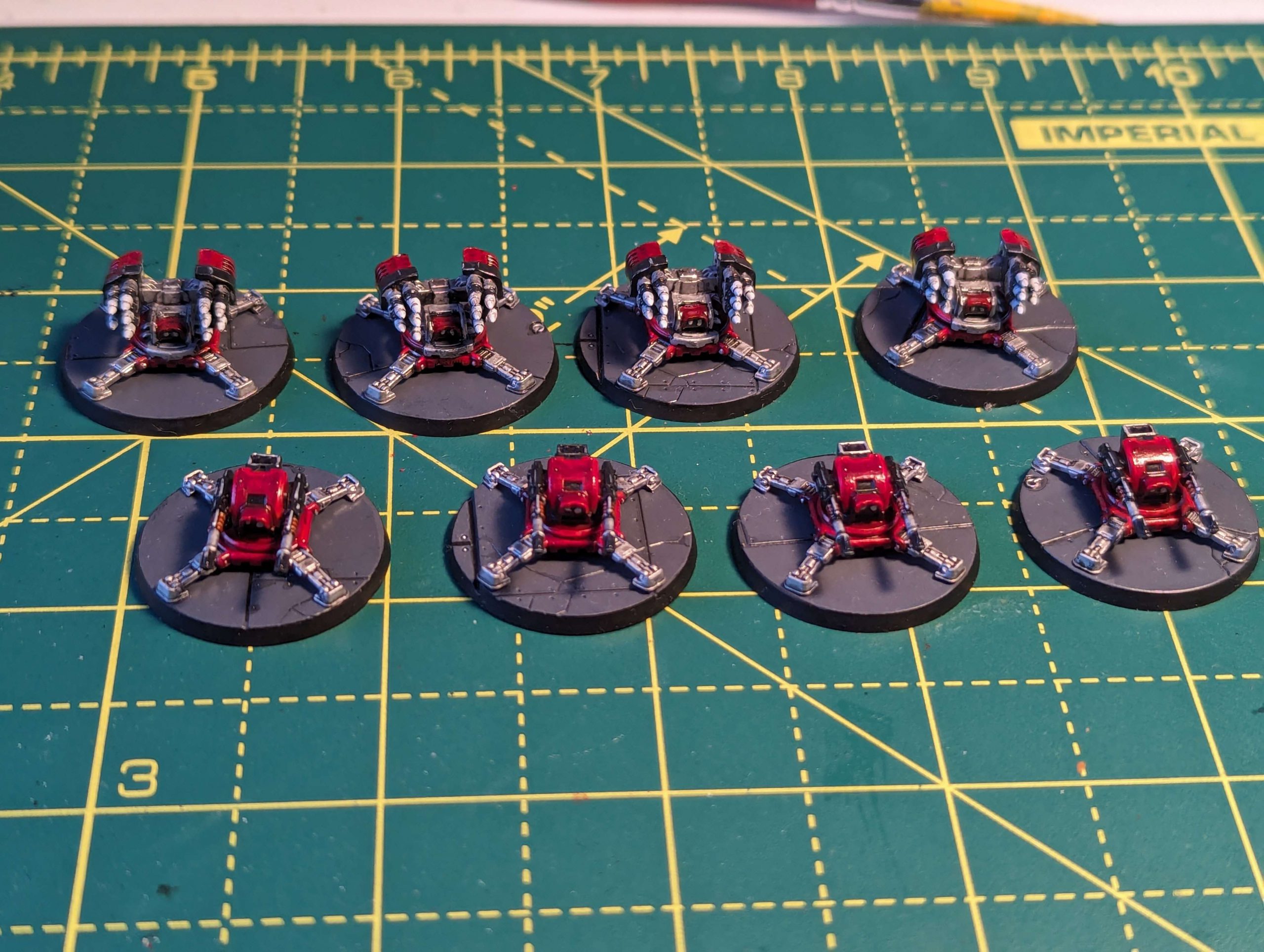
Here’s the Rapiers. The Laser Destroyers are particularly nice, and I didn’t hate painting the infantry, even if they are very fiddly for something that’s a little blob when you see it on the table. Yes, I painted the shoulder studs; I haven’t entirely abandoned toxic perfectionism.
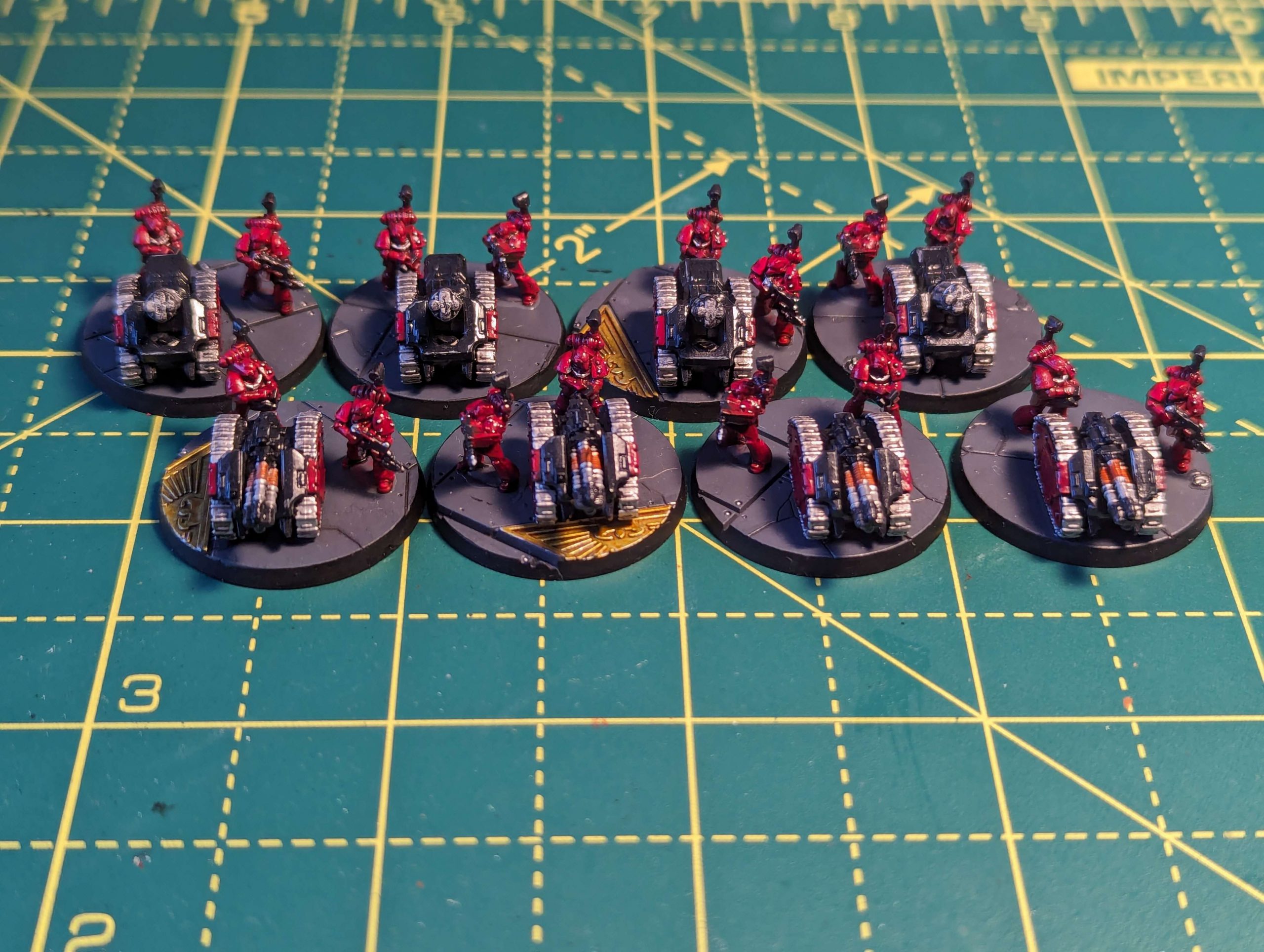
Here’s the Deredeos, which are the models I liked least from the box. The layout of the model is a pain but it’s a feature of the model itself in 30/40k as much as it is in LI. The plasma cannonades are fiddly to paint, have a lot of detail, and I didn’t enjoy them.
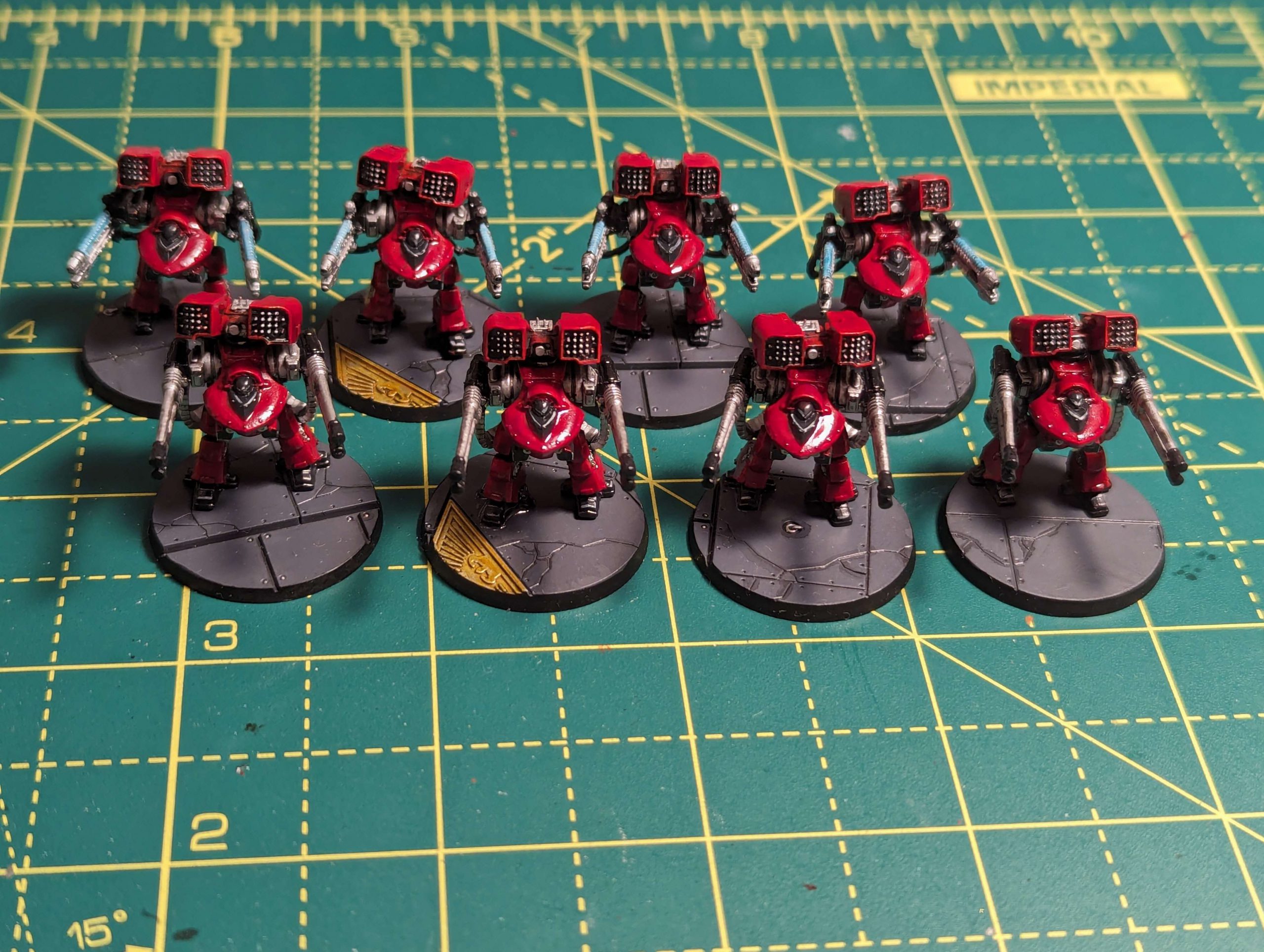
Here’s the Leviathans, the model most people really looked forward to in this box.

Conclusion
This is a set of well-designed miniatures that assemble fairly quickly and look good on the tabletop. The downside (needing two boxes to do mono-loadouts in each detachment) is a consequence of cramming eight different units into the sprue (versus six units, all of them smaller, on the Solar Auxilia sprue).
I liked the models, with only the Deredeo not growing on me due to the awkwardness in the cable layout and large amounts of detail that you really should paint but won’t be able to see on the tabletop.
The Leviathans are lovely little chubby boys, and the lascannon tarantulas look great with their more ergonomic feel compared to the mass-produced Solar Auxilia ones.
It’s a good kit, adds some additional variety to what’s available for Astartes, and Tarantulas will turn up a lot in Legions which have access to infiltrate for their infantry detachments. Leviathans I think will be turning up in a lot of dreadnought drop pods when those become available. Epic scale continues to be a great range to paint and collect.
Have any questions or feedback? Drop us a note in the comments below or email us at contact@goonhammer.com.
